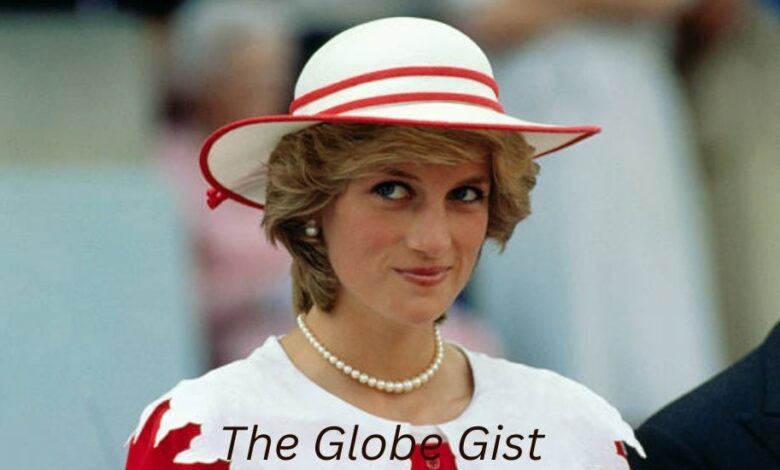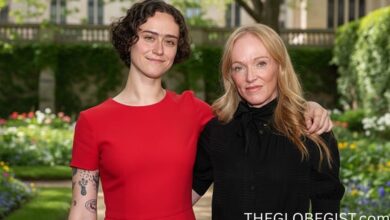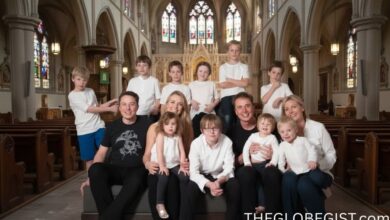Princess Diana: The Untold Story of Love, Struggles, and Tragedy

Princess Diana, often remembered as the “People’s Princess,” remains one of the most beloved and iconic figures in modern history. Her story blends fairytale beginnings, personal struggles, immense humanitarian work, and a tragic end that shook the world. Born Diana Frances Spencer in 1961, she rose from an aristocratic background to become the wife of Prince Charles, heir to the British throne. However, her life was far from the fairy tale it first appeared to be. From her highly publicized marriage and motherhood to her humanitarian causes and eventual tragic death, Princess Diana’s legacy continues to inspire millions globally.
Early Life of Diana Frances Spencer
Diana was born on July 1, 1961, at Park House, Sandringham, Norfolk. She came from a noble family with close ties to the British royal family. Her father, John Spencer, Viscount Althorp, later became the 8th Earl Spencer, while her mother was Frances Roche.
Her early childhood was marked by privilege but also personal challenges. Her parents divorced when she was young, which deeply affected her. Despite this, Diana grew up with a compassionate and empathetic nature. She attended finishing schools, worked briefly as a nanny, and lived an ordinary young woman’s life before being thrust into royal stardom.
Meeting Prince Charles
Diana first met Prince Charles in the late 1970s. Initially, Charles had been romantically linked with her elder sister, Lady Sarah Spencer. But over time, Diana and Charles developed a connection. The media quickly took notice of the shy and beautiful young woman who had captured the heir to the throne’s attention.
In February 1981, their engagement was announced. Diana’s sapphire-and-diamond engagement ring became iconic, later worn by her son’s wife, Catherine, Princess of Wales.
The “Wedding of the Century”
On July 29, 1981, Diana and Charles married at St. Paul’s Cathedral in London. The event was televised to an estimated 750 million viewers worldwide, making it one of the most-watched royal events in history.
Diana’s dress, designed by David and Elizabeth Emanuel, featured a 25-foot train and intricate lace detailing. While the world celebrated what looked like a perfect union, behind the scenes, the marriage was already under strain due to Charles’s long-standing relationship with Camilla Parker Bowles.
Becoming the Princess of Wales
As Princess of Wales, Diana quickly won over the British public with her warmth, charm, and ability to connect with ordinary people. She had a natural empathy that resonated beyond palace walls.
Her early royal duties involved supporting her husband, attending state functions, and representing the royal family abroad. However, Diana soon emerged as a public figure in her own right, admired for her style, personality, and compassion.
Motherhood and Family Life
One of Diana’s most defining roles was that of a mother. She gave birth to Prince William on June 21, 1982, and Prince Harry on September 15, 1984. Diana was determined to raise her children as normally as possible, breaking with some royal traditions.
Unlike previous royal mothers, she insisted on taking her children with her on royal tours, personally dropping them off at school, and giving them experiences beyond the palace. This hands-on, loving approach made her relatable to mothers around the world.
Humanitarian Work and Global Impact
Beyond her royal role, Diana became known for her tireless humanitarian work. She was a champion of causes that were often stigmatized or overlooked.
Work with AIDS Awareness
In the 1980s, when misinformation and fear surrounded HIV/AIDS, Diana made headlines by shaking hands with AIDS patients without wearing gloves. This single gesture helped change public perceptions and reduce stigma.
Landmine Campaigns
Diana also campaigned for the banning of landmines, visiting Angola and Bosnia to highlight the devastating effects on civilians. Her involvement brought global attention to the cause and contributed to the eventual signing of the Ottawa Treaty in 1997.
Other Causes
She supported over 100 charities, focusing on homelessness, leprosy, cancer, and mental health. Her ability to connect emotionally with people in vulnerable conditions made her stand out from traditional royals.
Struggles in the Public Eye
Despite her outward image of grace, Diana endured immense personal struggles. Her marriage to Prince Charles grew increasingly troubled due to incompatibility and Charles’s ongoing relationship with Camilla.
Diana openly admitted to battling bulimia, depression, and loneliness. In interviews, including her famous 1995 Panorama interview with Martin Bashir, she revealed her struggles, famously stating, “There were three of us in this marriage, so it was a bit crowded.”
Her openness about mental health was groundbreaking at the time, inspiring many to speak about their own struggles.
Separation and Divorce
By 1992, Diana and Charles announced their separation. The media frenzy surrounding their personal lives reached unprecedented levels. In 1996, their divorce was finalized. Despite this, Diana retained her title as the Princess of Wales and continued her humanitarian activities.
The Tragic Death of Princess Diana
On August 31, 1997, Diana was killed in a car crash in the Pont de l’Alma tunnel in Paris. She was with her companion, Dodi Fayed, and driver Henri Paul, who also died in the accident. Her bodyguard, Trevor Rees-Jones, survived with serious injuries.
Investigations concluded that the crash was caused by reckless driving, compounded by paparazzi pursuit. It was later determined that none of the passengers, including Diana, were wearing seatbelts.
Her death shocked the world, sparking an outpouring of grief. Millions mourned outside Buckingham Palace, and her funeral at Westminster Abbey was watched by over 2.5 billion people worldwide.
Legacy of the People’s Princess
More than two decades after her passing, Princess Diana’s influence remains strong. She transformed the image of the British monarchy, making it more relatable and compassionate. Her legacy continues through her sons: Prince William and Prince Harry, who both honor her memory in their charitable work.
Her approach to compassion, empathy, and authenticity set a new standard for what it means to be a modern royal. Fashion designers, humanitarian activists, and ordinary people continue to draw inspiration from her life.
Conclusion
Princess Diana’s life was a mixture of glamour, struggle, kindness, and tragedy. She was a woman ahead of her time—fearless in challenging traditions, vocal about personal issues, and deeply empathetic toward those who suffered. Though her life was cut short, her story continues to resonate across generations.
Her legacy reminds the world that true royalty is not about crowns or palaces but about compassion, humanity, and the courage to connect with people on a personal level. For those who admire her, her story will always be a guiding light of grace and resilience.
At The Globe Gist, we honor her enduring legacy and continue to share stories that inspire, enlighten, and remind us of the power of humanity.
Thanks for read our article if you want more like this kind of article visit our site The Globe Gist, and comment us.



